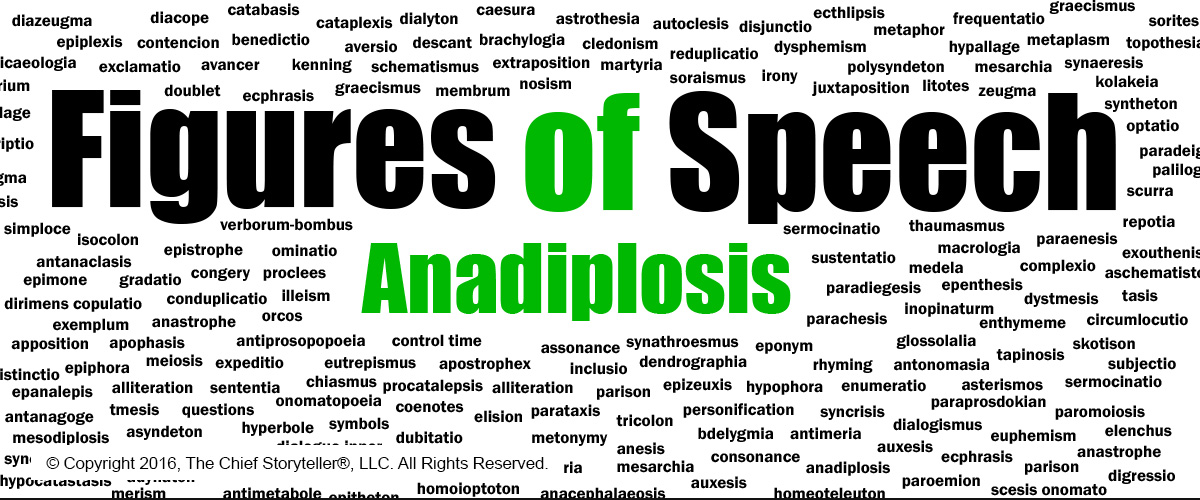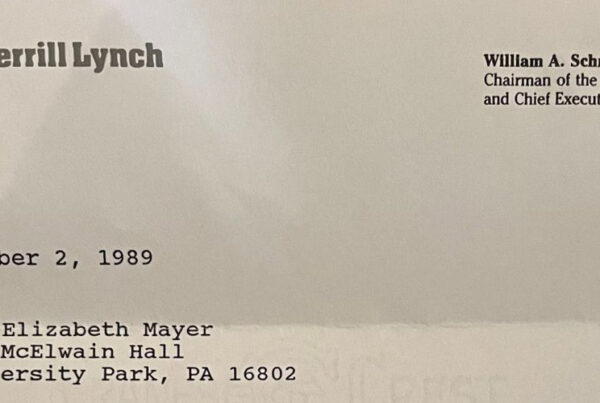
This blog post is about Anadiplosis, a Repetition Figure of Speech. It is part of a series on repetition. I share them as the English language has hundreds of literary devices to help you (dramatically) improve the effectiveness and impact of your various communications.
Repetition used well, strengthens your written and spoken narrative with emphasis and emotion. Repetition is by far, one of the most powerful of all figures of speech. Why? Because as human beings, we are programmed to recognize patterns and to pay attention to them.
While I include background information, Greek word derivation, and pronunciation, what is most important is the application of each figure of speech in your written, spoken, and social media communication.
I tell my consulting customers, workshop participants, coaching clients, and students (I’m an adjunct professor at The Robert H. Smith School of Business at the University of Maryland), the same thing:
“You never have to remember the actual Greek word for the figure of speech. Just remember the concept and application.”
Emphasis & Impact Figures of Speech include Anadiplosis, Anaphora, Asyndeton, Diacope, Epanalepsis, Epiphora, and Polysyndeton.
Amplification Figures of Speech include Auxesis and Epizeuxis,
Figures of Sound include Onomatopoeia.
Other Figures of Speech include Procatalepsis and Portmanteau.
There are three major sections:
- Figure of Speech. Includes a little background, usage, definition, pronunciation, other related figures of speech, and etymology.
- Usage Guidelines. Follow these guidelines to ensure maximum impact.
- Examples of Anadiplosis. Find examples from speeches, presentations, presidential addresses, poems, music, and more
1) ANADIPLOSIS – REPETITION FIGURE OF SPEECH
Repetition with Anadiplosis has the potential to increase your power of persuasion and create a sense of urgency with an obvious cause and effect. It also offers a stylistic strength to your listeners and readers with a soothing rhythm and cadence. The repetition of your word or phrase builds a sequence of related ideas, typically with three or four connected ideas. Used well, anadiplosis can give your story, presentation, training, speech, email, etc. a more natural sound, making it feel more like a conversation rather than a formal speech.
When Anadiplosis extends across at least three clauses or sentences, it can also be called Gradatio.
| Definition | Anadiplosis is the repetition of the last word or phrase in a preceding clause. The word/phrase is used at the end of a clause and then repeated at or very near the beginning of the immediate next clause or sentence. |
| Pronunciation | AN – uh – di – PLOH – sis |
| Also Known as | Duplicatio, Reduplicatio, or Redouble |
| Related to | Gradatio, Epanalepsis, Antimetabole, Anaphora |
| Etymology | Comes from the Greek word, ἀναδίπλωσις, which means a “doubling, doubling back, reduplicate, folding up.” It is from the Greek prefix ana, again, and diploun, to double, or diplous. |
2) USAGE GUIDELINES
Here is my own definition of Repetition.
Repetition is a literary device where a word or phrase is repeated two or more times to emphasize the point being made and/or emphasize the emotional feeling associated with the point being made. With more than 30 forms of repetition, it is more commonly thought of as a category rather than thought of as a single figure of speech.
Here are some guidelines for you to ensure Anadiplosis achieves your communication goals:
| Use Sparingly | Too much of one type of repetition will likely reduce its effectiveness and may cause your audience to miss your emphasis entirely as there are too many instances of your repetition. As such use Anadiplosis sparingly and for that matter, all of your figures of speech. |
| Choose a Simple Word or Phrase | If you were to analyze narratives where Anadiplosis is used, you would find the authors use simple words and simple phrases. You want to ensure your audience is able to readily remember your ideas. Simple always wins the day. See below for examples. |
| Use Your Orchestra |
In my training and teaching, I share specifics on how to use one’s voice to add (dramatic) impact to your spoken communication. Think of yourself as an orchestra with three main instruments: i) your Words; ii) your Body (Language); and iii) your Voice. Using your orchestra effectively, is what separates a good speaker from a great speaker. A good trainer from a great trainer. A good leader from a great leader. |
3) EXAMPLES OF ANADIPLOSIS
Look at the examples below. See how Anadiplosis is used to dramatically increase the effectiveness and impact of your words. Then experiment, mixing and combining other figures of speech in your written, spoken, and social media communication.
Example 1: Star Wars Episode 1, The Phantom Menace, Yoda Talking to Anakin
| Without Notation | “Fear is the path to the dark side. Fear leads to anger. Anger leads to hate. Hate leads to suffering. I sense much fear in you.” |
| With Notation |
“Fear is the path to the dark side. Fear leads to { anger }. { Anger } leads to { hate }. { Hate } leads to suffering. I sense much fear in you.”
Note 1: Notice there are two examples of Anadiplosis – Anger and Hate |
Example 2: Margaret Thatcher, United Kingdom Prime Minister, Conservative Party Address, 10 October 1980
| Without Notation | “Without a healthy economy, we can’t have a healthy society. And without a healthy society, the economy won’t stay healthy for long.” |
| With Notation |
“Without a healthy economy, we can’t have a { healthy society }. And without a { healthy society }, the economy won’t stay healthy for long.”
Note 1: “Without a healthy” at the beginning of both sentences is using Anaphora |
Example 3: Tom Bodett, American Author, Humorist, Radio Personality
| Without Notation | The difference between school and life? In school, you’re taught a lesson and then given a test. In life, you’re given a test that teaches you a lesson. |
| With Notation |
The difference between { school } and { life }? In { school }, you’re taught a { lesson } and then given a { test }. In { life }, you’re given a { test } that teaches you a { lesson }.
Note 1: Anadiplosis examples include School and Life |
Example 4: Ernest Hemingway, “Old Man and the Sea,” 1952, page 63
| Without Notation | “He had seen many that weighed more than a thousand pounds and he had caught two of that size in his life, but never alone. Now alone, and out of sight of land, he was fast to the biggest fish that he and ever seen and bigger than he had ever heard of, and his left hand was still as tight as the gripped claws of an eagle.” |
| With Notation |
“He had seen many that weighed more than a thousand pounds and he had caught two of that size in his life, but never { alone }. Now { alone }, and out of sight of land, he was fast to the { biggest } fish that he and ever seen and { bigger } than he had ever heard of, and his left hand was still { as tight as the gripped claws of an eagle }.”
Note 1: Anadiplosis examples include Alone and Biggest/Bigger |
Example 5: Confucius, 551 – 479
| Without Notation | “If language is not correct, then what is said is not what is meant; if what is said is not what is meant, then what must be done remains undone…” |
| With Notation |
“If language is not correct, then { what is said } is { not what is meant }; if { what is said } is not { what is meant }, then what must be done remains undone…” |
References: I use a combination of my experience, my personal library of books and journals, sources from the Internet, and my 710-plus page Story Elements Resource Guide. My favorite sources include, in alphabetical order: American Rhetoric, Encyclopedia Britannica, LitCharts, Literary Devices, Merriam-Webster Dictionary, Oxford English Dictionary, Silva Rhetoricae, and ThoughtCo. My favorite books include: A Handbook of Rhetorical Devices by Robert A. Harris; Elements of Eloquence by Mark Forsyth; and A Handlist of Rhetorical Terms, 2nd Edition by Richard A. Lanham.
Updated March 2019
Photography Source: Message Cloud/Word Cloud © Copyright 2019, The Chief Storyteller®, LLC. All Rights Reserved.
#chiefstoryteller #communication #figuresofspeech #language #rhetoric



